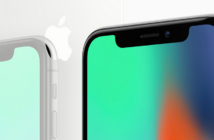By Jennifer Kyriakakis, founder and vice president of marketing at Matrixx Software
We now live in an on-demand economy where consumers, millennials in particular, are inclined to get what they want, whenever they want it. Whether it’s a cheap taxi ride home after a night out with friends, the guaranteed next day delivery of a parcel, or the ability to receive dough-to-delivery updates of a pizza delivery, consumers today are ‘always on’.
As a result, the experience they expect from their service provider must embody the one they grew up with on the web; interactive, personalised, engaging and instantly gratifying. It’s also an experience that they expect to change second by second as the offer itself develops, and the supplier invites the customer into their world.
Honed services
This quality of service is one which has been honed by digital players such as Uber, Domino’s and Amazon. When booking an Uber service customers can select the type of car, get a fare estimate and watch the vehicle’s progress as it travels to meet them, all directly through the app. In order to deliver this experience, Uber needs to know the location and the identity of the customer, the availability of their drivers, journey time, booking and payment information, even the vehicle licence plate. This entire process happens in real time and it is completely transparent.
Uber delivers one million taxi rides a day. Amazon handles 40 million transactions a day. Communications service providers on the other hand are dealing with hundreds of millions, billions in some cases, of customer interactions a day. While these more nimble players are using the internet and cloud service delivery architecture, service providers and mobile operators in particular, are tied to legacy infrastructure, optimised to deliver voice and text messaging, not capable of continuing to deliver data services in real time as these services grow in complexity and the level of personalisation described above.
These are vast organisations in a state of overhaul, migrating services, charging, self-care and analytics systems into the digital domain. As a result, it is much harder for service providers to interact with their customers in real time and offer the same experience that Uber, Amazon and Dominos currently offer when it comes to their mobile account.
Tentative steps
Although they have made their first tentative steps into this area, the end user experience delivered by the self-care apps currently provided needs refining so that consumers can instantly make and see changes reflected in their mobile data usage and spend.
Delivering a digital experience to mobile subscribers is getting harder. Gone are the days where consumers just want text and minutes balance updates. Today, data roaming, shared data plans, on-demand purchases, along with faster 4G speeds are desirable factors. The service providers that can offer them have been proven to increase their net promoter score.
Increasingly, C-level executives are judged by their ability to increase the NPS across the organisation. As digital service provider leaders increase their NPS scores, they gain loyal customers who are more likely to recommend them to social networks and friends. The end result is more revenue.
The on-boarding process is critical too; service providers never get a second chance to make a first impression. Digital brands such as Uber and Airbnb know this only too well, which is why they make it so easy to set up an account.
The same rules should apply to setting up a mobile phone account. If customers are empowered with the ability to buy the handset online, have it delivered the next day, turn it on and immediately open the app and enter credit card information, their impression of the mobile service provider’s brand is already favourable. Online and ready to go in five minutes, the customer should then be able to pick the services they want, as if they are ordering in a fast-food joint.
Legacy headache
Unfortunately, service providers are held back by legacy IT systems and processes, and lack the technology needed to deliver the precision of information that their business now needs to run on. As a result, they are incapable of providing the digital experience their customers expect, NPS scores drop, and they find themselves handling customer complaints, not customer compliments.
Service providers today have a narrow window to adapt new technologies to help them compete in the digital economy. Traditionally such a major transformation would have taken two to three years to implement, but the fast-paced environment of today’s digital economy means they only have a matter of months to adapt before the dynamic millennial generation develops new tastes and appetites.
Forward thinking service providers have already taken the steps to become digital communications service provider and are consequently reaping the benefits. Telstra recently released its first half results, revealing a 40% reduction in call centre complaints, saving millions of dollars in the process, a five percent increase in ARPU and a 23 point increase in NPS for customers with data disputes. One can imagine the scene in the boardroom.
Ultimately, adopting a new digital strategy will help increase customer satisfaction, winning consumer loyalty and driving more revenues. By adopting agile digital ecosystems and IT stacks designed for the requirements of an online customer journey, carrier service providers can lower the cost to deliver products, drive traffic away from call centres to self-care digital channels, and roll out new services, in real time.
Matrixx enables service providers to innovate and profit from the transition to digital.





